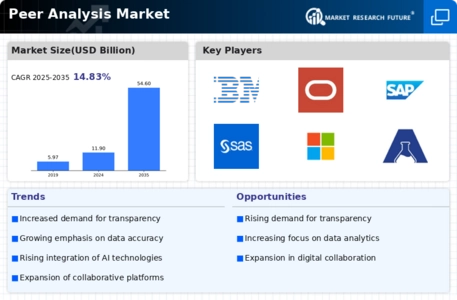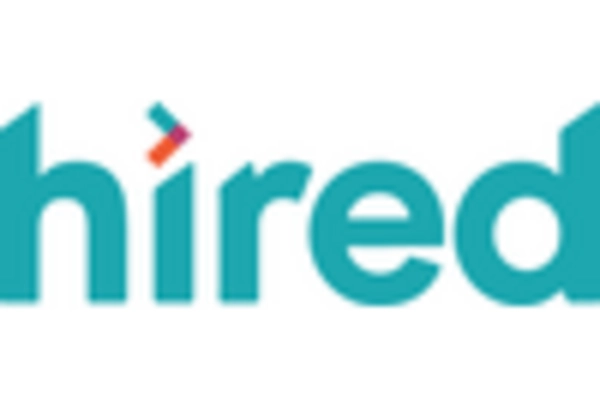The Peer Analysis Market is characterized by a dynamic competitive landscape, driven by the increasing demand for transparency in compensation and workplace culture. Key players such as LinkedIn (US), Glassdoor (US), and PayScale (US) are strategically positioned to leverage their extensive user bases and data analytics capabilities. LinkedIn (US) continues to enhance its platform by integrating advanced AI tools to provide personalized job recommendations and salary insights, thereby solidifying its role as a leader in professional networking and peer analysis. Glassdoor (US), on the other hand, focuses on expanding its user-generated content, emphasizing employee reviews and salary reports, which fosters a community-driven approach to workplace transparency. PayScale (US) is actively investing in technology to refine its compensation analytics, aiming to provide businesses with tailored solutions that align with market trends. Collectively, these strategies contribute to a competitive environment that prioritizes user engagement and data-driven insights.
The Peer Analysis Market exhibits a moderately fragmented structure, with numerous players vying for market share. Key business tactics include localizing services to cater to regional employment trends and optimizing digital platforms for enhanced user experience. Companies are increasingly focusing on partnerships and collaborations to expand their reach and improve service offerings. This competitive structure allows for a diverse range of services, from salary benchmarking to employee satisfaction metrics, which collectively influence market dynamics.
In September 2025, LinkedIn (US) announced the launch of its new AI-driven salary insights tool, which aims to provide users with real-time compensation data tailored to their specific job roles and locations. This strategic move is significant as it not only enhances user engagement but also positions LinkedIn (US) as a frontrunner in utilizing technology to meet the evolving needs of job seekers and employers alike. By offering personalized insights, LinkedIn (US) strengthens its value proposition in the competitive landscape.
In August 2025, Glassdoor (US) expanded its partnership with various educational institutions to provide students with access to salary data and company reviews, thereby fostering informed career choices. This initiative is crucial as it aligns with the growing trend of transparency in employment, particularly among younger job seekers. By integrating educational resources with peer analysis, Glassdoor (US) enhances its relevance and appeal to a demographic that values informed decision-making.
In July 2025, PayScale (US) launched a new feature that allows companies to benchmark their compensation packages against industry standards in real-time. This development is particularly important as it empowers organizations to remain competitive in attracting and retaining talent. By providing actionable insights, PayScale (US) reinforces its commitment to helping businesses navigate the complexities of compensation management in a rapidly changing market.
As of October 2025, the Peer Analysis Market is witnessing trends such as increased digitalization, the integration of AI technologies, and a heightened focus on sustainability. Strategic alliances among key players are shaping the competitive landscape, enabling companies to pool resources and enhance their service offerings. Looking ahead, competitive differentiation is likely to evolve from traditional price-based strategies to a focus on innovation, technological advancements, and supply chain reliability. This shift underscores the importance of adaptability and forward-thinking in maintaining a competitive edge in the Peer Analysis Market.


















Leave a Comment